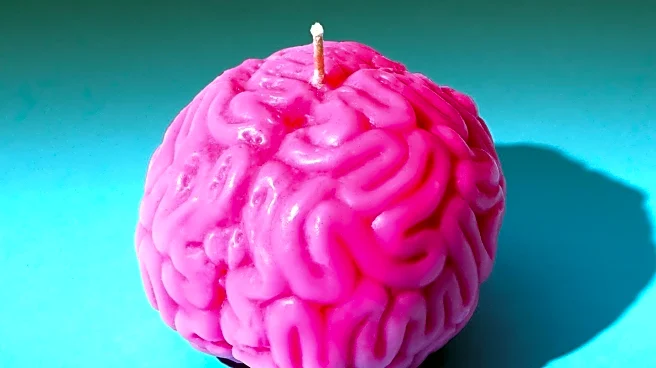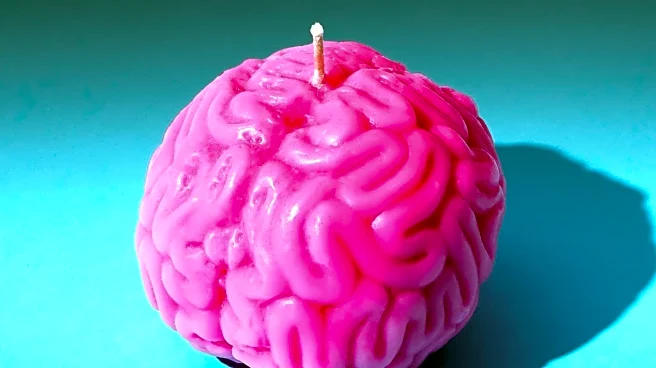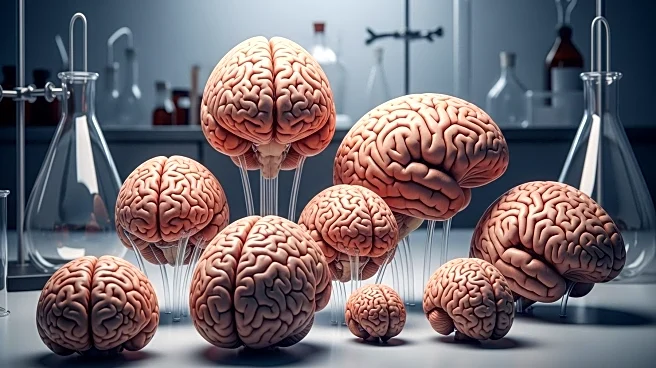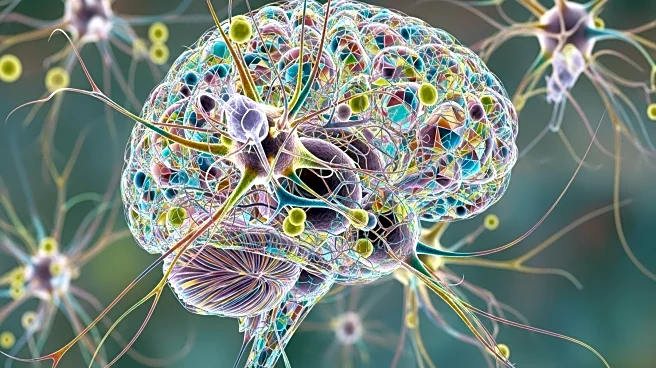What's Happening?
Recent research has advanced the understanding of neural correlates associated with behavioral inhibition (BI) and anxiety risk in infants. Utilizing methods such as magnetic resonance imaging (MRI) and electroencephalography (EEG), scientists have mapped patterns of neural activity that may predict anxiety-related behaviors. MRI studies have shown that infants exhibit functional connectivity similar to adults, with differences in connectivity linked to anxiety disorders. EEG studies have identified delta-beta coupling and frontal asymmetry as potential markers of anxiety risk. These findings suggest that early-life neural processing differences could be indicative of future anxiety disorders.
Why It's Important?
Understanding the neural basis of anxiety risk in infants is crucial for early identification and intervention. By pinpointing specific neural markers, researchers can develop targeted strategies to mitigate anxiety disorders before they fully develop. This research has implications for public health, potentially reducing the prevalence of anxiety disorders and associated healthcare costs. It also offers insights into the developmental trajectory of anxiety, informing both clinical practices and parental guidance. Stakeholders such as healthcare providers, policymakers, and researchers stand to benefit from these findings.
What's Next?
Future research will likely focus on refining neurodevelopmental models of anxiety, exploring the specificity and significance of each neural network associated with early-life risk. Longitudinal studies are needed to assess the stability of these neural markers over time and their relation to anxiety outcomes. Researchers may also investigate the impact of maternal stress and psychopathology on infant brain connectivity, aiming to develop comprehensive intervention strategies. Collaboration between neuroscientists, clinicians, and policymakers will be essential to translate these findings into practical applications.
Beyond the Headlines
The ethical implications of early identification of anxiety risk in infants must be considered. While early intervention can be beneficial, it also raises questions about privacy and the potential for stigmatization. Additionally, the variability in brain-behavior associations highlights the need for personalized approaches in treatment and prevention. As research progresses, it will be important to balance scientific advancements with ethical considerations, ensuring that interventions are both effective and respectful of individual differences.










